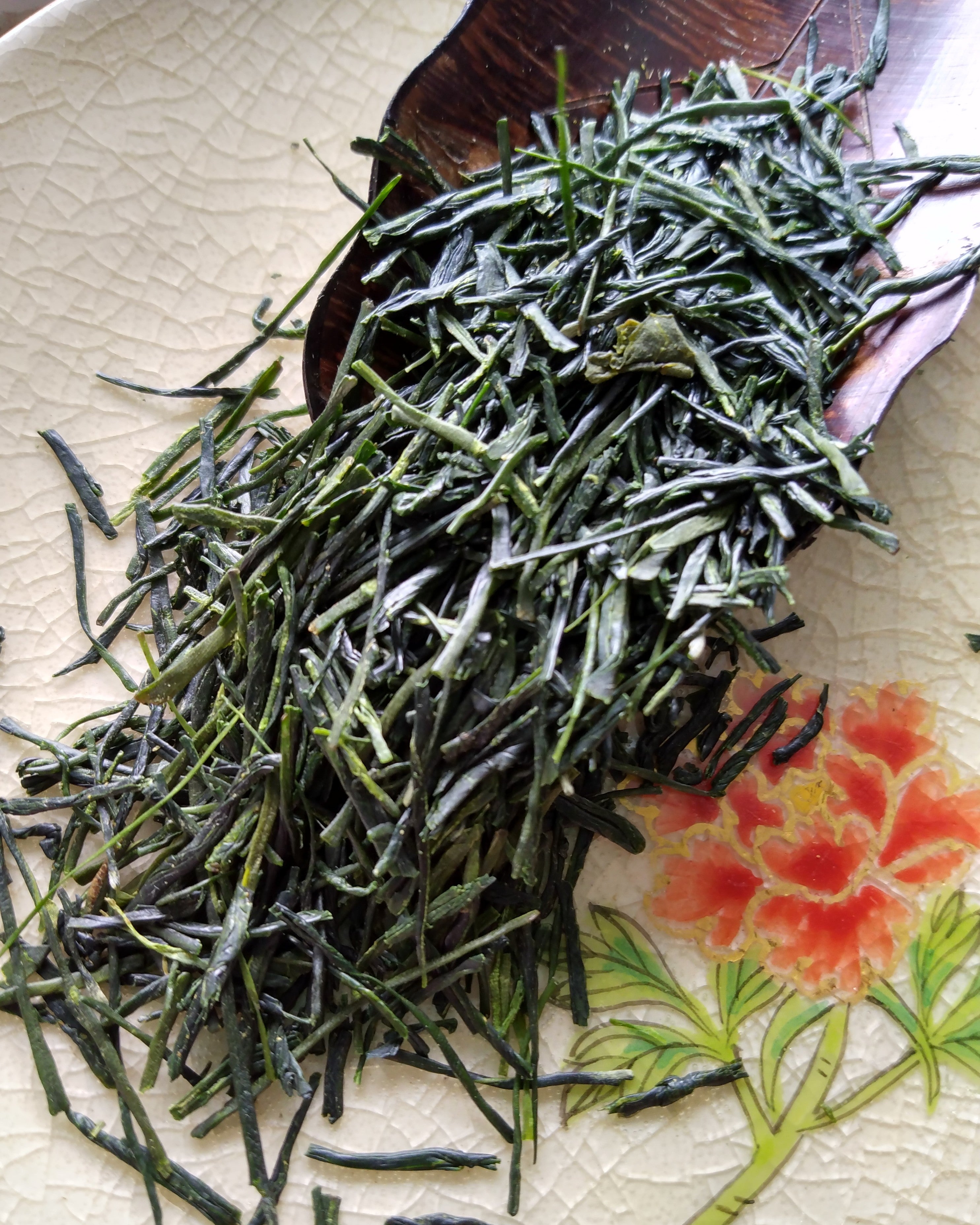Description
Bizen-yaki Matcha Chawan (Tea Bowl), by Fujiwara Yu (1932-2001). This vintage Ido-gata (well-shaped) tea bowl carries the mark of Fujiwara Yu, eldest son of National Living Treasure Fujiwara Kei. It is rustic, a bit rough to the touch with bits of feldspar popping through the clay and blackened in areas from the firing. The interior is a warm reddish color. Fujiwara Yu initially did not follow in his father's footsteps, working as a magazine editor after graduating from college. He eventually returned home to study pottery under his father, and established his own kiln in 1967 after winning numerous ceramic awards in Japan and abroad. In 1973, he was designated an Important Intangible Culture Property for Okayama Prefecture, and in 1998 awarded a national Medal of Honor. H. 3"(7.5cm) x DIA. 5.625"(14.25cm). 363 grams.
Bizen ware is named for the Province of Bizen, the old name for the area of current Okayama Prefecture. It was traditionally made around Imbe Village, and there are still numerous kilns operating in the Imbe area. Currently, there are around 300 kilns operating in the region. Bizen ware is one of the older pottery traditions in Japan, going back to the 14th C. Bizen wares are typically wood-fired in a noborigama (climbing kiln) or anagama (tunnel kiln) slowly over several days but getting up to high temperatures. It is an unglazed ware, so the finished pots are totally dependent on the effects of the kiln firing and the potter's expertise in firing the kiln.
The Thiel Family has graciously allowed me to select a number of items from their parents’ extensive private collection of Japanese and Japanese-inspired crafts to offer here. We are offering them at great values so that they may find new loving homes, and ALL profits are being donated to Midori-sensei’s long-term care fund. Below is some brief information on Philip Thiel and Midori Kono Thiel.
Philip Thiel and Midori Kono Thiel were a decades-long dynamic duo of support and contributions to the Art, Architecture, and Cultural communities of the greater Seattle area and beyond. Their contributions are far too numerous to list here; but they were, to say the least, immense, generous, and sure to leave a lasting legacy. They were also passionate collectors of Japanese arts and crafts; including textiles, ceramics, architectural pieces, wood, lacquer ware, paintings, prints, folk toys, and reference books on all of the above.
Midori Kono Thiel (1933 -) has long been widely recognized for her artistic achievements, her teaching, and her cultural contributions to the Japanese art and culture communities of the Pacific Northwest. After completing her MA in Painting at UC Berkeley, she went to Japan on a UC Traveling Fellowship to study woodblock printing with well-known hanga artists Hiratsuka Un’ichi and Hagiwara Hideo. Over the years, she has studied with numerous Japanese artists in Japan, and at workshops in the U.S. by visiting Japanese artists, in the fields of Sumi and Nihonga painting, calligraphy, print making, weaving, dyeing, music (koto and shamisen), Noh and Kyogen performance, and Nihon Buyo dancing. She had become so well-accomplished in several of these areas that she has received numerous awards in the U.S. and in Japan for her artwork, and she has taught Japanese arts and culture to a variety of students in the region from young children, to university students, to senior adults.
Midori-sensei’s contributions to the cultural community of Seattle have been recognized and awarded by the Japanese Consul General in Seattle for fostering US-Japan relations, and from the Seattle Cherry Blossom Festival for furthering the understanding of Japanese culture in the US. She was a long-time artist in residence for local schools, and for the King County and Seattle Arts Commissions. She was a long-time supporter and performer for the Seattle Japanese Garden, and for numerous cultural festivals across the region over many years. If something “Japanese” was happening, Midori-sensei was always there performing and making invaluable educational contributions.
Philip Thiel (1920-2014) had careers in Naval Architecture (teaching at MIT); as a working (“dry land”) architect at the firms of Bauhaus School architects Marcel Breuer (NY) and Walter Gropius’ The Architects’ Collaborative (Cambridge); as a professor of Architecture and Environmental Design at UC Berkeley; and as Professor Emeritus of Architecture and Urban Planning at the University of Washington, in Seattle. His deep love for the art, architecture, and culture of Japan began with meeting Japanese architect and educator Kiyoshi Seike while at The Architects’ Collaborative; and with meeting his future wife of 59 years, Midori Kono, while at UC Berkeley. This interest led several research visits to Japan, and to teaching Architecture at the Tokyo Institute of Technology and at the Sapporo School of Design.
Although his long teaching career and published architecture books have surely impacted thousands of students from many parts of the world, he was also a community activist in the greater Seattle area. His professional expertise and interests in public spaces, environmental psychology, and the human experience of moving through built environments led him to becoming an important community advocate for park spaces and public plazas in Seattle.





